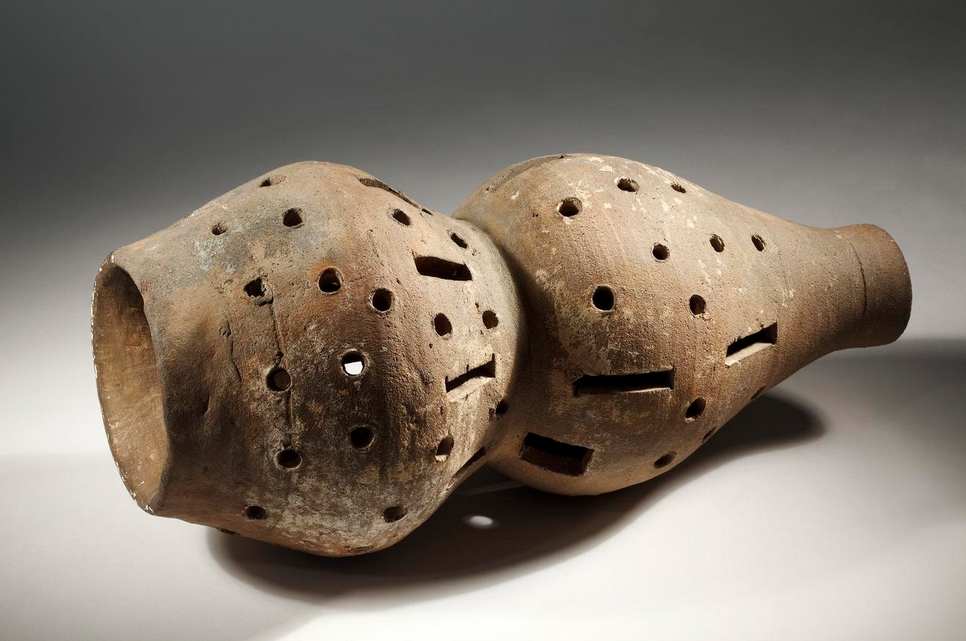The zodiac sign for summer is Cancer. Mythology tells us, it was all about Hercules, but the rest of us know it is about a delicatessen – crayfish

Catching crayfish in lakes and streams is and age-old summer joy carried out by boys otherwise busy with herding cattle in meadows and along streams in the Middle Ages. What you need is in fact just a string, some bait or perhaps a homemade trap in the form of a clay-pot. Cooked in boiling water in what might as well have been a homemade clay-pot and over a small fire, we used to cook crabs during the hot summers in the 50s; I suppose the same has been practised all over Europe since time immemorial.
However, crayfish from the nearby lake was fished in a more serious way by my grandfather in order to serve up as a delicatessen for the yearly summer-party (July) when family and friends gathered to dig into large trays filled with the red and appetizing fresh-water lobsters. Down they went, accompanied by lots of Aqua Vitae and local beer…Most modern cooks will perhaps only serve the tails, but at Scandinavian parties the best part is to suck out the soft “stomach” while eating the meat on well-buttered bread amd dressed with mayonnaise and lemon. Medieval recipes recommend vinegar.
The Fishing Book of Maximilan I

That crayfish was also sought after by the high and mighty may be gathered from the famous manuscript prepared by for the Emperor Maximilian
The title – Descriptio aquarum pisciferarum in comitatu Tirolensi et Goritiensi a. 1504 – tells us what this is about: one of the earliest description of fishing in Tyrol and the County of Gorizia (Görtz). The Fishing Book was commissioned by Maximilian I in 1504 and written by Wofgang Hohenleiter. The plan was to provide the emperor with a book full of information about the different fish-waters as well as when and how to catch the different kinds of fish as well as how to care for the upkeep of the different stocks. All in all 110 different fishwaters are described in the book. It is probable the book was never finished as parts of the manuscript consist of empty pages. But what we have is enough to wet the appetite of any angler and gourmet.

Further, some of the descriptions render a number of dialectical words denoting species and fishing tackle, which are still in use in the localities, demonstrating the existence of these traditions through centuries (if not longer).
The manuscript was illustrated by Jörg Kölderer, painter at the court of Maximilian I and provided with eight valuable full-page illuminations with fishing scenes.
Medieval Crab & Rice
Crabs definitely belonged to the what the Italians call “Cucina Povera”. As such, an extensive search for medieval recipes does not yield much more than the recipe, which recommends cooking the crayfish and serve them with vinegar. However, crayfish does figure in one lenten recipe, which must have been a delicacy, served at the high table: Blancmange of Fysshe. This exists in a number of versions where the fish has been substituted by crayfish, shrimps or lobsters. Here is a recipe from Forme of Cury,, from 1381
“For to make blomanger of fysch, tak a pound of rys. Les hem wel & wasch, & seþ tyl þey breste & lat hem kele; & do þereto mylk of to pound of almandys. Nym þe perche or þe lopuster & boyle yt, & kest sugur & salt also þerto, & serue yt forth.”
(From: Constance B. Hieatt and Sharon Butler, Curye on Inglysch. English culinary manuscripts of the fourteenth century (Including the ‘Forme of Cury’). Oxford, 1985.)
To make blanchemange of fish take a pound of rice. Clean and wash it well and cook until it breaks and let it cool; and add to that milk of two pounds of almonds. Take the perch or the lobster and boil it, adding sugar and salt and serve it immediately.
It appears, this recipe is for a kind of risotto into which is added a mixture of lobster, crayfish or fish as well as almond-milk plus salt and sugar. A modern variation would be to boil the rice in a strained liquid, cooked upon the discarded shells of the crayfish, shrimps or fish planned to go into the dish. (Never discard shells from crustaceans; if you don’t have the time to boil them off, freeze the shells and use them at a later date). As it is cooked with rice, this was a dish served at the lord’s table and not “downstairs”.
Warning
Beware: most European cray-fish belong to threatened species due to the import of invasive signal crayfish – the Pacifastacus leniusculus. Get a permit before fishing in public waters and then go after the signal crayfish. It carries a vile crayfish plague, which – although itself immune – kills of the local cray-fish; hence, these are protected. However, by fishing crayfish of this type, you actually help ridding the European waterways of it.

SOURCES
Tiroler Fishereibuch 1504. In: The Austrian National Library, Cod. 7962
Das Fischereibuch Maximilians I. – Faksimile und Transkription.
Von Martin Hochleithner und Wolfgang Hohenleiter.
AquaTech Publications, Kitzbühel 2013
(Facsimile with translation (in German))
FEATURED PHOTO:
Tiroler Fischereibuch 1504. Ôstereicher Nationalbibliothek Cod. 7962, fol 100. The detail shows the catching of crayfish by night at the river Drau (Drava) near Lienzer Klause in Eastern Tirol.
